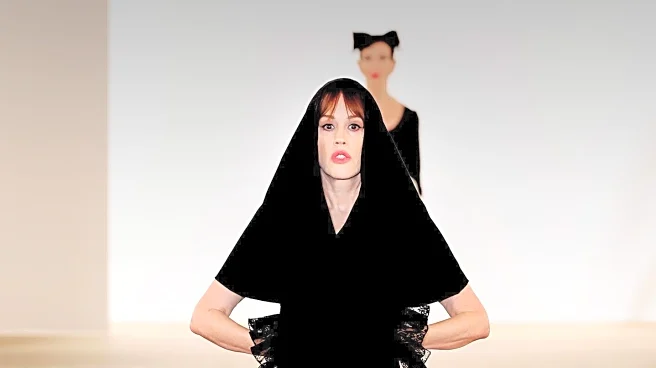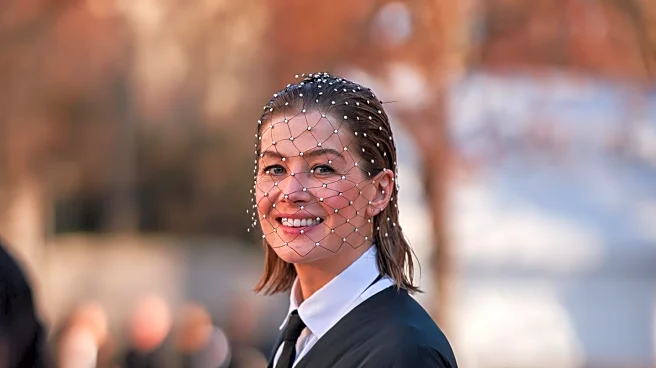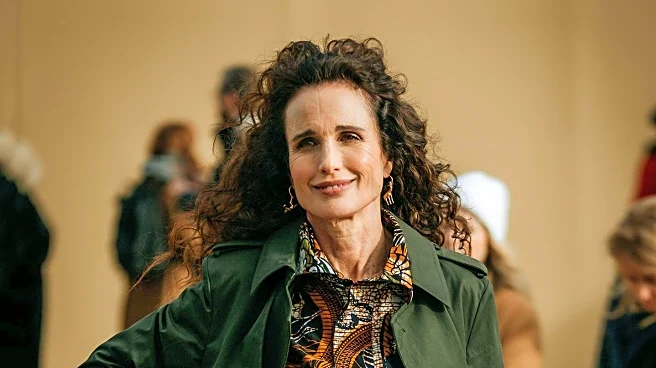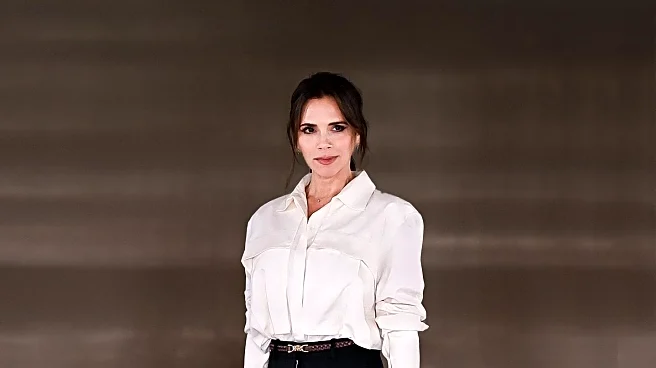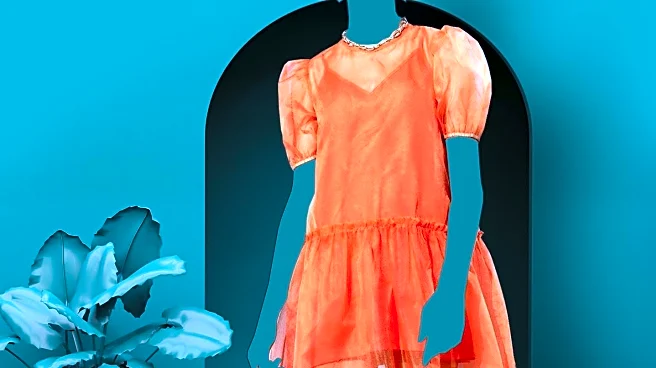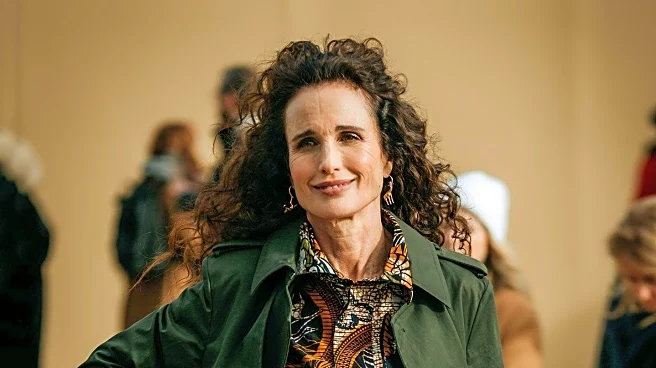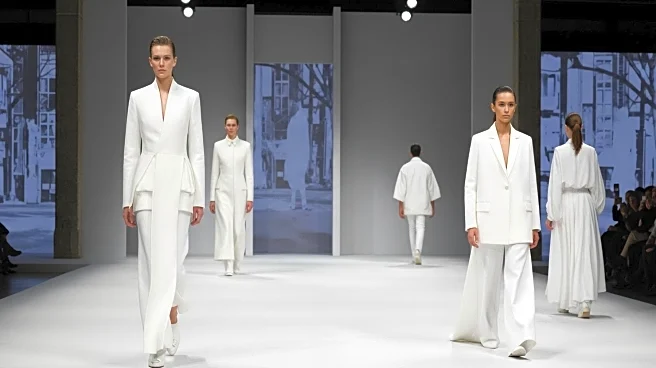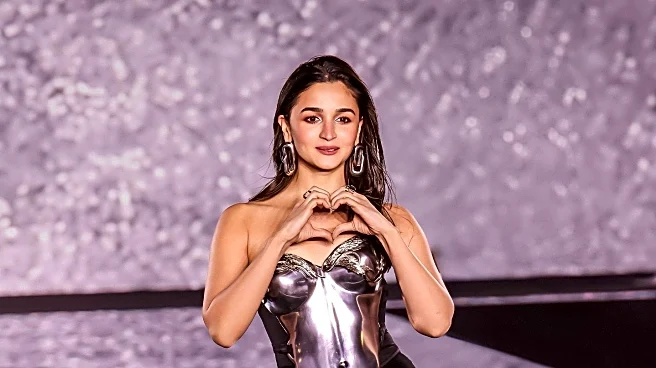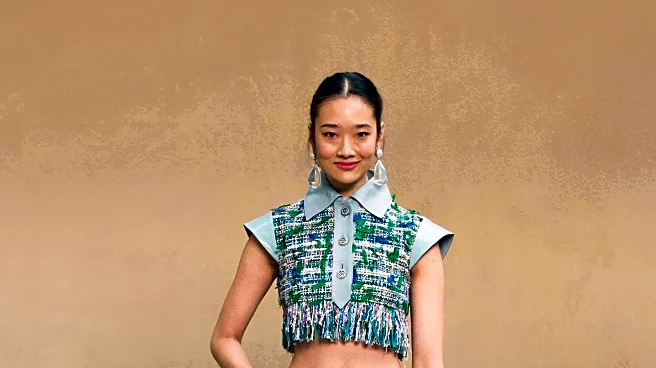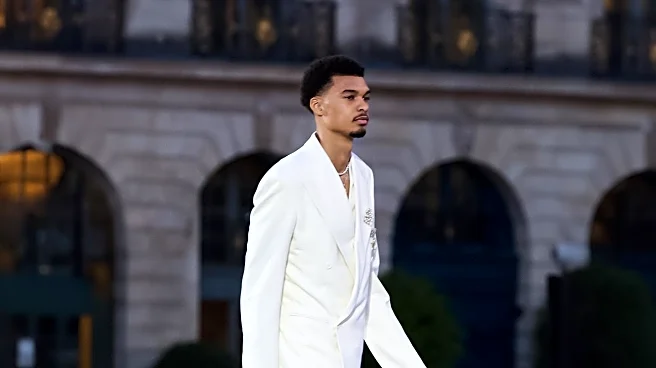What's Happening?
Luis De Javier, a young fashion designer, has presented his Spring 2026 Ready-to-Wear Collection in an unconventional manner. Instead of a traditional runway show, De Javier opted for a '24 Hours of Love and Labor' livestream event from a shopfront in the Marais, Paris. This unique presentation allowed onlookers to witness the behind-the-scenes process of fashion creation. The event featured a variety of looks inspired by Spanish culture, including flamenco and bullfighting motifs, reimagined in modern womenswear. The collection included embroidered shawls, matador coats, and avant-garde accessories, showcasing De Javier's flair for blending traditional elements with contemporary fashion.
Why It's Important?
This innovative approach to fashion presentation highlights a shift in how designers can engage with global audiences. By utilizing a livestream format, De Javier not only showcased his collection but also provided transparency into the creative process, potentially setting a new trend in the fashion industry. This method allows for broader accessibility, reaching audiences who may not attend traditional fashion shows. The collection's emphasis on cultural motifs reimagined for modern wear also reflects a growing trend in fashion towards inclusivity and cultural appreciation, which can influence future design directions and consumer preferences.
What's Next?
Following the success of this event, other designers may explore similar livestream formats to present their collections, especially those with limited budgets. This could lead to a democratization of fashion shows, making them more accessible to a global audience. Additionally, the positive reception of De Javier's culturally inspired designs may encourage other designers to explore and incorporate diverse cultural elements into their work, potentially leading to a richer and more varied fashion landscape.
Beyond the Headlines
The use of livestreaming in fashion presentations raises questions about the future of traditional runway shows and their relevance in a digital age. As technology continues to evolve, the fashion industry may increasingly rely on digital platforms to reach wider audiences, reducing the environmental impact of large-scale events. This shift could also influence how fashion is consumed, with a greater emphasis on digital engagement and online retail experiences.

